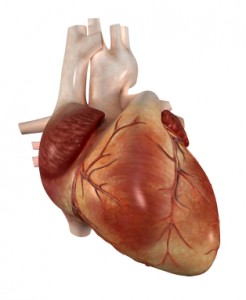Both Obesity and Bipolar Disorders in 2249 Individuals Show White Matter Microstructure Abnormalities
Lorielle Dietze of Dalhousie University “obtained body mass index (BMI) and diffusion tensor imaging derived fractional anisotropy (FA) values from 930 individuals with bipolar disorders (BD), and 1319 control individuals from 20 cohorts in the ENIGMA-BD Working Group.”
They “found that lower FA was associated with both BD and BMI, in five white matter tracts, including the corpus callosum and thalamic radiation. Nine ROIs were correlated with only BD, while higher BMI was uniquely correlated with lower FA in four white matter ROIs.”
They concluded: “For the first time we showed that both obesity and BD demonstrated lower FA in some of the same regions. The impact of obesity may be greater in some tracts in BD individuals.”
Psychiatric Disorders Linked to More Physical Disease

In an article in the journal JAMA Network Open, Leah S. Richmond-Rakerd and colleagues found that people with mental disorders had more physical disease at younger ages, they had more and longer hospitalizations and associated health care costs, and they were more likely to die at younger ages than people without mental disorders.
The research came from a population-based cohort study of more than 2.3 million citizens of New Zealand over three decades. The authors concluded, “These findings suggest that ameliorating mental disorders may have implications for improving the length and quality of life and for reducing the health care costs associated with physical diseases.”
Editor’s Note: This editor would suggest the importance of also doing the opposite, that is, looking out for and treating and preventing the physical illnesses to which psychiatric patients are more vulnerable in order to improve the length and quality of life.
Either way, medical illnesses, both physical and psychiatric, are intimately intertwined, and both deserve careful and early intervention. Psychiatric and physical illnesses cause suffering, disability, and early demise. Major psychiatric illnesses need to be seen as potentially lethal medical illnesses, a fact that few people realize. Conversely, physical illnesses are often not treated as aggressively or intensively in psychiatric patients as in the general population. For example, patients with bipolar disorder get fewer interventions with stents and bypasses for the same heart problems as others. Special attention needs to be given to better encourage and support the medical health of psychiatric patients.
ADHD Common in People with Mood Disorders

In a meta-analysis published in the journal Acta Psychiatrica Scandinavica in 2021, researcher Andrea Sandstrom and colleagues reported that people with mood disorders had a three times higher incidence of attention-deficit hyperactivity disorder (ADHD) than people without mood disorders. ADHD was also more likely to occur in people with bipolar disorder than in people with major depression. The comorbidity is most common in childhood, less so in adolescence, and lowest in adulthood.
Based on 92 studies including a total of 17,089 individuals, the prevalence of ADHD in people with bipolar disorder is 73% in childhood, 43% in adolescence, and 17% in adulthood. Data from 52 studies with 16,897 individuals indicated that prevalence of ADHD in major depressive disorder is 28% in childhood, 17% in adolescence, and 7% in adulthood.
Editor’s Note: A key implication of this research is that there is a huge overlap of bipolar disorder and ADHD in childhood, and that physicians need to specifically look for bipolar symptoms that are not common in ADHD to make a correct diagnosis. These include: brief or extended periods of mood elevation and decreased need for sleep in the youngest children; suicidal or homicidal thoughts and threats in slightly older children; hyper-sexual interests and actions; and hallucinations and delusions. When these are present, even when there are also clear-cut ADHD symptoms, a clinician must consider a diagnosis of bipolar disorder and treat the child with mood stabilizers prior to using stimulants or other traditional ADHD medications.
Conversely, physicians should be aware of the much lower incidence of ADHD in adolescents and adults with bipolar disorder. Here one should first make sure that the apparent ADHD symptoms of hyperactivity, inattention, poor concentration, etc. do not result from inadequately treated mania and depression, and if they do, treat these symptoms to remission prior to using traditional ADHD medications.
Study Examines Comorbidity of ADHD and Bipolar Disorder

In a 2021 review and meta-analysis in the journal Neuroscience and Biobehavioral Reviews, researcher Carmen Schiweck and colleagues described the comorbidity of attention-deficit hyperactivity disorder (ADHD) and bipolar disorder in adults. This was the first review and meta-analysis to quantify the comorbidity of the two fairly prevalent disorders. The meta-analysis included 71 studies with a combined total of 646,766 participants from 18 countries.
The review found that among people with ADHD, about 1 in 13 also have bipolar disorder, while among people with bipolar disorder, 1 in 6 have comorbid ADHD. The prevalence differed depending on the continent where patients lived and the diagnostic systems used there, with greater prevalence of both disorders in the US, where the Diagnostic and Statistical Manual of Mental Disorders is used, than in Europe, where the International Classification of Diseases is typically used. (Other parts of the world were less represented in the meta-analysis.) Schiweck and colleagues found that bipolar disorder had an onset about 4 years earlier in patients who had comorbid ADHD.
Increased Risk for Dementia in Bipolar Disorder

At the 2020 meeting of the International Society for Bipolar Disorders, researcher Flavio Kapczinski described a recent meta-analysis of 10 studies that found that bipolar disorder is a risk factor for dementia, and that lithium treatment can decrease the incidence of dementia in people with bipolar disorder.
The ten studies included a total of 6,859 participants with bipolar disorder and 487,966 healthy control participants. People with bipolar disorder were 2.96 times more likely to develop dementia than those without bipolar disorder. Five of the studies included information about treatment with lithium, which was found to decrease the risk of dementia among those with bipolar disorder by a little more than half (0.54).
Five studies also revealed that the risk of progression to dementia was higher among those with bipolar disorder than among those with major depressive disorder. In addition, one of the ten studies explored predictors of dementia in people with bipolar disorder and found that those who experienced more mood episodes had a higher risk of dementia.
Editor’s Note: It appears that the number of mood episodes a person experiences predicts dementia, and it has previously been found to predict the emergence of cognitive impairment. Prevention is the name of the game, and lithium is the best defense. My new mantra: “Prevent Episodes, Protect the Brain, Use More Lithium.”
Comorbid Psychiatric Disorders Impair Response to Psychosocial Treatment in Adolescents with Bipolar Disorder
At the 2019 meeting of the International Society for Bipolar Disorders, researcher Marc J. Weintraub and colleagues followed 145 adolescents with bipolar disorder over a period of two years. The adolescents with comorbid disorders (compared to those with bipolar disorder alone) fared more poorly in response to psychosocial treatment.
Weintraub and colleagues found that the adolescents who had anxiety disorders in addition to their bipolar disorder spent more weeks depressed, had more severe symptoms of (hypo)mania, and had more family conflict over the course of the study than those adolescents who had bipolar disorder alone.
Participants who had attention deficit hyperactivity disorder (ADHD) in addition to their bipolar disorder had more weeks with (hypo)manic symptoms, had more severe (hypo)manic symptoms, and greater family conflict than those with bipolar disorder alone.
Those participants with comorbid oppositional defiant disorder (ODD) or conflict disorder in addition to their bipolar disorder had more depressive symptoms and family conflict throughout the study.
Editor’s Note: How to better approach treatment in these diagnostically complex young people is an urgent unmet need, as most research excludes participants with more than one psychiatric disorder. Clinicians treating young people with bipolar disorder and comorbidities such as anxiety disorder, ADHD, and ODD must generally rely on inferences from children with these illnesses, using their own intuition about best treatment approaches rather than having evidence from systematic studies about how best to treat these children. It appears that both psychosocial and pharmacological treatments must be tailored to these more complicated presentations.
More Than 70% of People with Bipolar Disorder Have Additional Psychiatric Illness
At the 2019 meeting of the International Society for Bipolar Disorders, researcher Kathleen R. Merikangas reviewed large scale community studies of people with bipolar disorder in multiple countries. She reported that more than 70% of people with bipolar disorder have three or more lifetime disorders, not just bipolar disorder.
Preliminary findings suggested that adolescents with bipolar disorder did not tend to have other disorders in addition to their bipolar disorder, but as they approached young adulthood these became more common. Merikangas concluded, “These findings suggest that early intervention may prevent the secondary comorbidity that is related to greater impairment, worse course and poorer treatment response in bipolar disorder.”
Editor’s Note: It is a major deficit that not only is there limited data on early intervention in general, but virtually none about early intervention in the face of multiple comorbidities. This lack of treatment knowledge means that the majority of people with bipolar disorder are facing challenges that could be mitigated if only the needed clinical treatment research were done.
Repeated Ketamine Reduces PTSD and Depression in the Short Term
In a 2018 open study by C. Sophia Albott and colleagues in the Journal of Clinical Psychiatry, veterans with post-traumatic stress disorder (PTSD) and a simultaneous diagnosis of major depression were treated with six infusions of intravenous ketamine over a 12-day period (Mondays, Wednesdays, and Fridays for two weeks).
Ketamine produced large improvements in both conditions. The remission rate was 80.0% for PTSD and 93.3% for depression. The median time to first relapse after the treatment was 41 days for PTSD and 20 days for depression.
One side effect of ketamine was that dissociative symptoms increased temporarily with repeated infusions. PTSD symptoms did not worsen among those participants taking ketamine.
The study was intended to evaluate the efficacy, safety, and durability of repeated ketamine infusions. Ketamine has been used in emergency rooms to rapidly treat depression and suicidality, but the effects of a single infusion fade within days. Albott and colleagues reported that this treatment scenario with multiple ketamine infusions produced rapid results that lasted longer than single ketamine infusions.
Editor’s Note: While this study found that repeated ketamine infusions were safe, it is possible that long-term use may lead to addiction. Researcher Nolan R. Williams and colleagues reported in a 2018 article in the American Journal of Psychiatry that ketamine works via activation of the opiate receptor. The drug naloxone, which rapidly reverses opiate overdose, completely blocked ketamine’s antidepressant effects.
Adipokines May Be the Link Between Mood Disorders and Obesity
 Researchers David J. Bond and Lakshmi Yatham think they may have identified why bipolar disorder and obesity occur so often together. In North America, more than 60% of people with bipolar disorder are overweight or obese, and obesity rates are 60% higher in people with bipolar disorder than in people without bipolar disorder.
Researchers David J. Bond and Lakshmi Yatham think they may have identified why bipolar disorder and obesity occur so often together. In North America, more than 60% of people with bipolar disorder are overweight or obese, and obesity rates are 60% higher in people with bipolar disorder than in people without bipolar disorder.
Bond and Yatham hypothesized that adipokines might be responsible for both bipolar disorder and obesity. Adipokines are cell signaling proteins that regulate both mood and appetite. Abnormal levels of adipokines in blood could cause both mood episodes and weight gain.
The researchers measured blood levels of five adipokines (leptin, adiponectin, resistin, adipsin, and lipocalin-2) in 53 young people with bipolar disorder. They found three interesting links between adipokines, mood, weight, and medications, which they reported in the Journal of Clinical Psychiatry in 2017.
The first finding was that low levels of leptin and adiponectin (adipokines with antidepressant properties) predicted a greater risk of depressive relapse over a 12-month period. The second finding was that high levels of leptin and adipsin predicted greater weight gain over a 12-month period. The third finding was that treatment with second-generation antipsychotics, which often leads to weight gain and other metabolic side effects, was associated with higher levels of resistin, an adipokine linked to type 2 diabetes.
The findings about leptin were particularly interesting, because leptin’s appetite-regulating effects change with a person’s weight. In the study, low leptin predicted depression, while high leptin predicted weight gain. In people of normal weight, low leptin predicts weight gain, while in overweight or obese people, high leptin predicts weight gain. Bond and Yatham suggest that leptin’s mood-regulating effects may be more consistent, with low leptin increasing depression risk regardless of weight.
These findings may help researchers find ways of treating mood episodes that do not encourage weight gain.
Minimizing Cardiovascular Risk in Bipolar Disorder
 At the 2017 meeting of the American Association of Child and Adolescent Psychopharmacology, researcher Ben Goldstein gave an overview on cardiovascular risk and bipolar disorder. He noted a study by Nicole Kozloff and colleagues in the Journal of Affective Disorders in 2010 that indicated that onset of cardiovascular disorder occurred an average of 17 years earlier in those with BP I (at age 40-45 years) compared to controls (at age 55-60 years). Several risk factors made onset of cardiovascular disorder more likely, including diabetes, obesity, and the metabolic syndrome (which consists of any three of the five following symptoms: high cholesterol, triglycerides, blood sugar, blood pressure, and waist circumference).
At the 2017 meeting of the American Association of Child and Adolescent Psychopharmacology, researcher Ben Goldstein gave an overview on cardiovascular risk and bipolar disorder. He noted a study by Nicole Kozloff and colleagues in the Journal of Affective Disorders in 2010 that indicated that onset of cardiovascular disorder occurred an average of 17 years earlier in those with BP I (at age 40-45 years) compared to controls (at age 55-60 years). Several risk factors made onset of cardiovascular disorder more likely, including diabetes, obesity, and the metabolic syndrome (which consists of any three of the five following symptoms: high cholesterol, triglycerides, blood sugar, blood pressure, and waist circumference).
Risk factors include pathophysiological and behavioral mechanisms and certain medications. Pathophysiological mechanisms include inflammation, oxidative stress, and autonomic and endothelial dysfunction.
Behavioral mechanisms include poor diet, exercise, sleep, and increases in tobacco and alcohol use.
Medications could also contribute, with the most to least problematic for weight gain including, among atypical antipsychotics: clozapine, olanzapine, risperidone, quetiapine, aripiprazole, ziprasidone, and lurasidone. Among mood stabilizers, worst to best for avoiding weight gain are: valproate, lithium, carbamazepine, oxcarbazepine, and lamotrigine.
Goldstein has data from retinal vascular photography (RVP), whereby blood vessels can be observed directly. As opposed to in adults, in youth large vessels are more problematic and arteriolar to venous ratio is abnormally higher in bipolar children compared to normal controls. This ratio is lower in bipolar adults, also reflecting increased cardiovascular risk.
Given the huge loss of life expectancy in bipolar disorder, primarily from cardiovascular disorders, Goldstein urges greater and earlier attention to reducing the pathophysiological, behavioral, and pharmacological mechanisms for poor health. These should be pursued in parallel with attempts at mood stabilization. Read more



